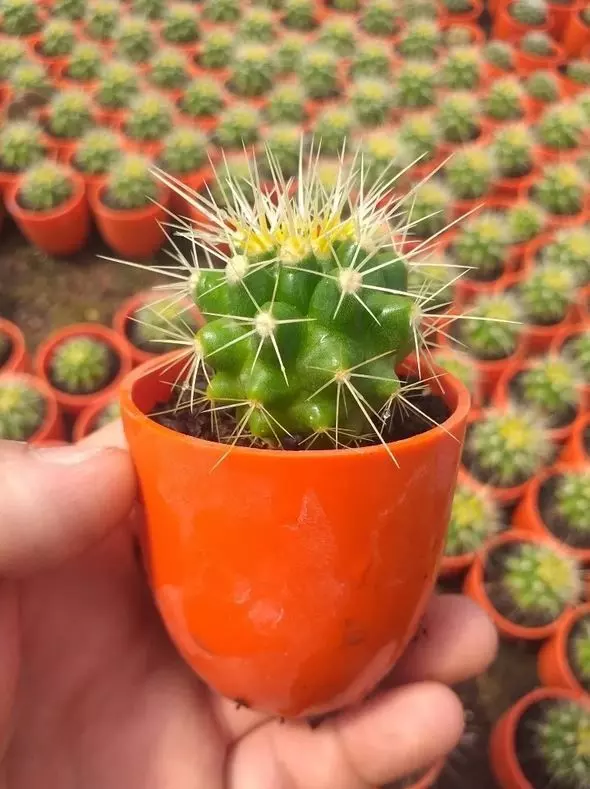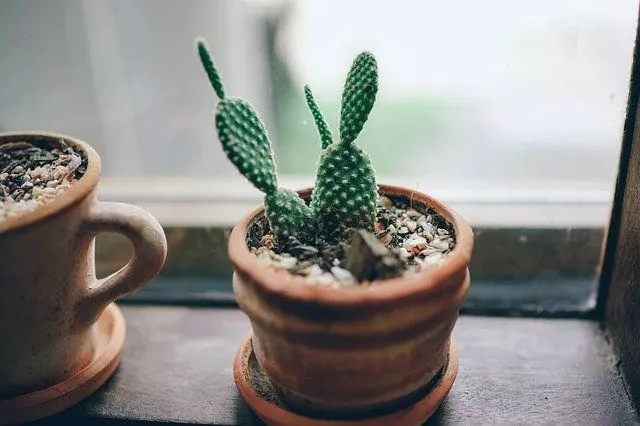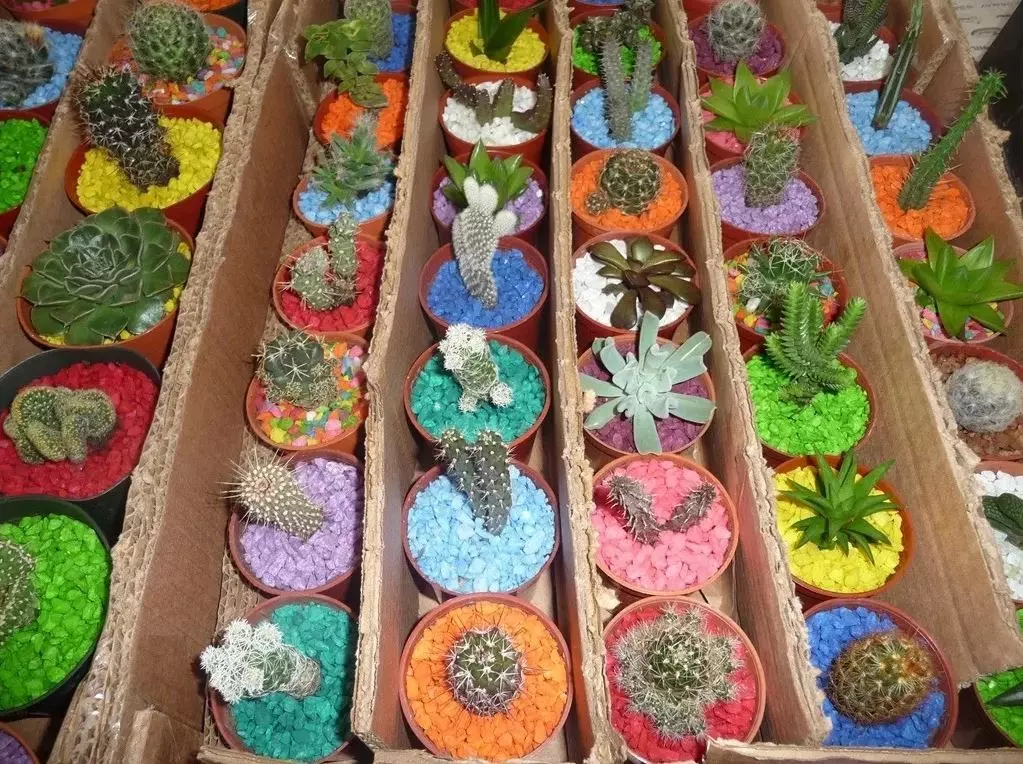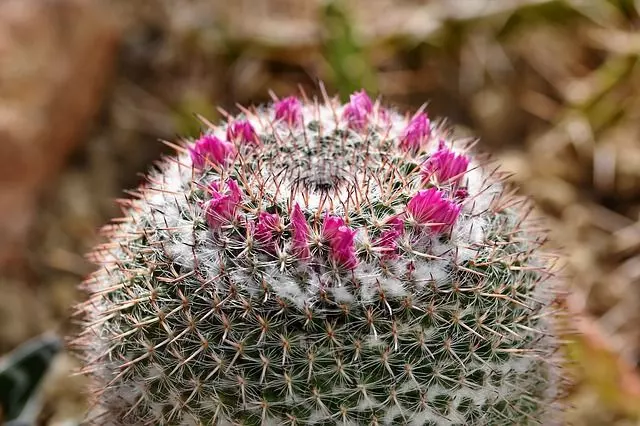Today we will show you how to grow cactus from seed step by step. Multiplication of plants such as Cacti is an easy and inexpensive way to expand your decor. One of the many possible methods to do this is multiplication by seed.
Multiplying cacti by seed is exciting. It requires patience, but it is very beautiful.
You have to be clear that when you multiply a vegetable by seed the result is not a plant identical to its parents, it will look like it, but it may not keep the good characteristics of them.
The usefulness of doing it by seed is that there are species that can only be reproduced by this method. It is also used to obtain hybrids, that is, to cross two different species to obtain a new one, the hybrid.
The purpose of producing cactus hybrids is to achieve a larger, earlier, and longer flowering period, as well as to achieve the most attractive coloration and flower size possible. Nursery growers are looking for new hybrids that are more attractive to the market.
To hybridize, hand pollination is used instead of insect or wind pollination. A small brush is used. It must be cleaned at each change of species to be pollinated. The best time for pollination is midday, which is when the plants produce the most pollen. Although in the nocturnal flowering species it has to be done in the early hours of the morning. From the fruits obtained, when ripe, the seeds are extracted.
Table of Contents
How to Obtain Cactus Seed
Before knowing how to grow cactus from seed we must get the seeds. There are very frequent failures in the sowing for using seeds that were not fertilized in their moment in the natural process, because they were old or because they have been badly conserved.
Cactus seeds usually have good viability for one year, and can continue to germinate for 2 or 3 more years, but with a decreasing success rate.
To get seeds you have several options:
Use homegrown seeds. You should wait until the fruits are fully ripe (you will know if they come off easily), otherwise, the seeds are not ripe enough. Let them dry in a dry and not too hot place and crumble the fruits to remove the seeds. If they contain pulp, it is very important to remove it and soak the seeds several times in water; if any pulp remains, it will be a source of the fungus. Keep the seeds in a paper envelope, with the name of the species and the date of collection. A good place to keep them until the moment of sowing is in the refrigerator, in the fruits and vegetable section, since the temperature is usually less cold.
Another option is to buy them in a place of confidence that has not been harvested for too long. The envelopes of cactus seeds sold in flower shops fail quite a lot.

When to Plant Cactus Seed
The best time for sowing is spring, also summer. Therefore, the seeds should be kept until that time (in the refrigerator, in the vegetable compartment). Sowing can also be done in autumn and winter, but on the condition that heating and, eventually, artificial light are available for germination. One heating system is that of electric seedbeds.
The temperature required for the germination of cacti and other succulent plants varies with the species and ranges between 21 and 30°C. Lower or higher temperatures mean that nothing comes out. Read on to learn more about how to grow cactus from seed.
Substrates for Cactus
It must be porous and with good drainage, otherwise, the roots will rot.
They sell mixtures already prepared for Cactaceae and Crassulas in general, but you can also make it yourself. A good mix would be:
50% of very well-made mulch, passed with a 2-3mm mesh to separate the coarse and thus avoiding the presence of large organic debris that can cause problems to the seedlings.
40% washed river sand.
10% part of blond peat, if you don’t have it or can’t find it, use black peat.
Mix everything well so that it is homogeneous.
The already prepared substrate can be sterilized by putting it in the microwave or a common oven. The sand, with boiling water, also works.
Containers or Pots for Cactus
– A jar or plastic pots. Being small containers minimizes the losses in case of an attack of fungi. For example, plastic pots of 3“ in diameter are ideal. A transparent lid or a closed plastic bag is placed over the pots or plastic containers.
– Propagation boxes or “mini-greenhouses”. They have a glass or plastic cover and many are equipped with bottom heating employing cables that are plugged into the mains. This allows having temperature to make sowings in autumn and winter.
– Alveolar trays, etc.
The container must be perforated at the base so that excess water can drain out.

How to Grow Cactus from Seed Step by Step
1. Fill the container with the mixture within a few inches of the rim.
2. For good drainage, put pebbles at the bottom and fill the interstices with coarse sand. Instead of pebbles, you can use pozzolana, also called volcanic gravel.
3. Put the container in another container with water so that it absorbs the water through the drainage hole and rises to the surface by capillarity. Once it gets there, remove the container. Draining can cause the level of the substrate to drop; then pour in more mix and repeat the capillary watering operation. You are now ready to plant.
4. Spread the seeds as evenly as possible. For very small seeds, use a teaspoon or a folded piece of paper placed in the fold and tap it.
5. Cover them with a thin layer of sand 2-3 millimeters or, with a small spatula, press them lightly into the moist substrate.
6. Cover with a plastic lid or clear plastic. This helps to maintain the humidity of the substrate and not having to be watering (spraying) so frequently. Besides, it allows a homogeneous, warm temperature and avoids drafts. By having a transparent cover (lid) you control germination without having to open it.
7. Water to keep it humid but without excess. The method in this phase of germination can be by capillarity, that is to say, putting the pots in a plate or tray full of water and waiting that the land is absorbing it by the drainage holes, being given by finished the irrigation at the moment in which humidity is observed in the surface of the land. Another valid system is to water the soil slowly with the help of a sprayer.
8. About a month after germination, make some holes in the lids or in the plastic to prevent the appearance of fungus.
9. Open the seedbed progressively, 15 minutes a day for a week, for example, gradually increasing the times.
10. Every 15 days dilute a fungicide in the irrigation to avoid fungus problems.

How to Grow Cactus from Seed Tips and Advice
Watering should be frequent because the roots are fragile and if it dries out they may not recover. The reddening of the seedlings is usually a sign of lack of water as well as the seedlings begin to lose size. But do not overdo it with water.
It is good to add some fertilizer every 15 days. They sell fertilizers specially formulated for cactus and other Succulents. It contributes half of the dose recommended by the manufacturer.
During this period the small cacti mustn’t receive direct sunlight as this would increase the risk of dehydration. A partial shade in a greenhouse or placed near a window in which only the sun in the morning or any other window if we put a small parasol will be the best.
Finally, when you see that they are already strong and not in danger, remove the cover completely and leave the seedlings in the air.
Repotting Cactus
Repotting into individual pots should be done when the seedlings are well developed and are not at risk. It can be months, 1 year… depending on the species. Or even stay there without transplanting for years due to slow growth.

